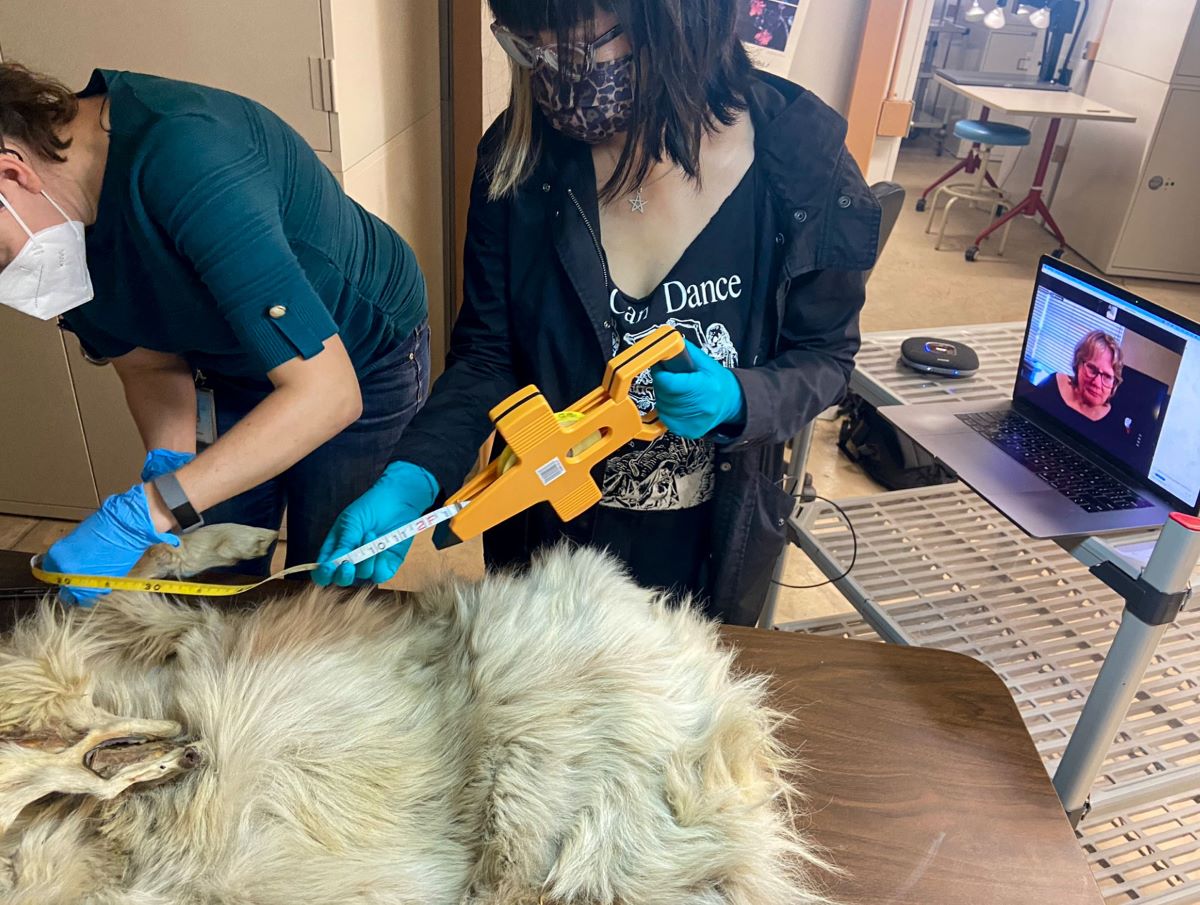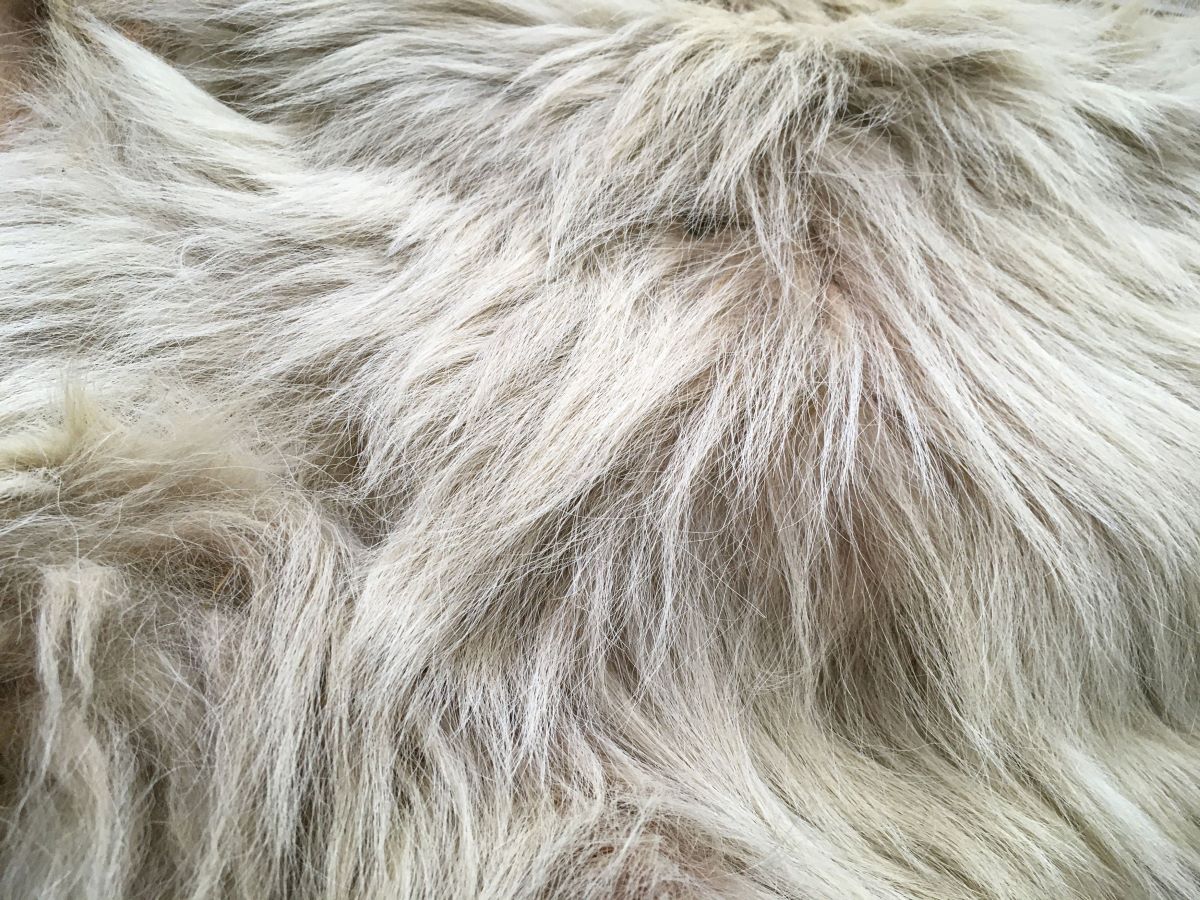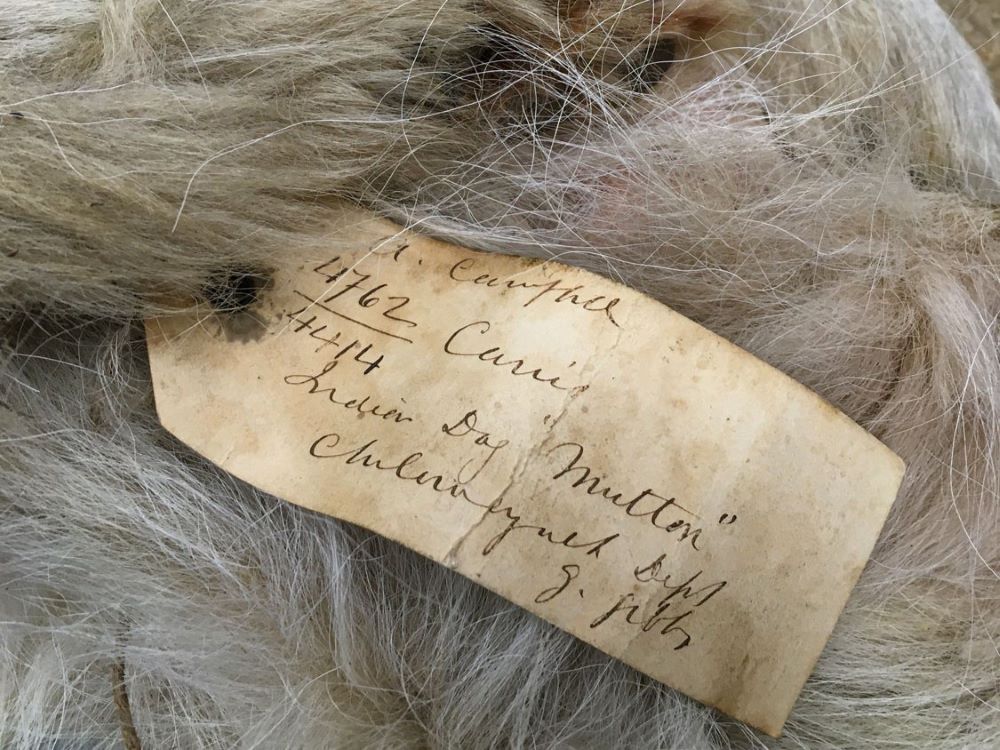Audrey Lin didn’t set out to study an extinct breed of fluffy white dog. Nor did she plan to be part of the international team that produced the first high-quality sequence of the full Coast Salish woolly dog genome. It happened by chance.
In 2021, Lin, a molecular evolutionary biologist, was working as a post-doctoral fellow at the Smithsonian Institution’s National Museum of Natural History in Washington, D.C., when she came across a Hakai Magazine article about some very important, very furry little dogs.
In February of that year, Hakai published a feature by Virginia Morell about the woolly dog, an extinct dog breed domesticated by the Coast Salish people long ago. On the shores of the Pacific Northwest, Coast Salish people bred, raised and sheared these dogs, using their woolly hair to weave blankets that were at once practical and symbolically and culturally significant.
Lin was stuck at home because of COVID-19 restrictions when she stumbled upon Morell’s story on social media. Like many people, Lin had never heard of woolly dogs and was unaware of the long-standing Coast Salish practice of canine husbandry. The piece piqued her interest. She was hooked by the image conjured in the story: “of these flocks of white hairy dogs surrounding a powerful woman.”
But to Lin, one detail in the story stood out above the rest: the tale of Mutton, a dog whose pelt, it turned out, had spent more than 160 years housed right where she worked.
Mutton was a spirited woolly dog with a unique history. He was likely born in the traditional territory of the Stó:lō Nation, what is now the Fraser Valley. In 1858, Mutton was adopted by George Gibbs, a naturalist and ethnologist working on the Northwest Boundary Survey, a British-American expedition to map the land border between Canada and the United States.
Gibbs kept detailed field journals and notes about his adventures — including Mutton’s escapades, like the time the rascal chewed on the head of a scientifically important mountain goat specimen. The pair travelled together for about two years before Mutton fell ill and died. After he passed away, Mutton’s pelt and lower leg bones, along with Gibbs’s journals, found their way into the Smithsonian’s collections.
Reading the story, Lin was struck by curiosity: was Mutton a wool dog?
European colonists had brought their own dogs to North America, and these introduced breeds eventually replaced the dogs already living on the continent, Lin says. Because Mutton was born decades after the introduction of settler breeds, Lin wondered if he was a pure Coast Salish woolly dog, mixed with a European breed, or something else entirely. Unlike most people reading the story, she knew exactly how to answer her own questions. She needed to sequence Mutton’s genome.
So Lin reached out to Logan Kistler, an anthropologist and the Smithsonian’s curator of archeobotany and archeogenomics. While Kistler also didn’t know much about woolly dogs, he was captivated by the idea that perhaps the only known specimen was sitting nearby.
Before taking samples from Mutton’s pelt and beginning their research, the pair secured permission from Steven Point, Grand Chief of the Stó:lō Nation, on whose land the pup was likely born. Then, Kistler got to work sequencing Mutton’s DNA in the Smithsonian’s otherwise deserted ancient DNA lab, shuttered by the COVID-19 pandemic.
Comparing Mutton’s DNA to that of hundreds of other dog breeds, both modern and ancient, Lin and Kistler found that he was indeed a woolly dog. Or, rather, Mutton was about 84 per cent woolly dog, and shared about 16 per cent of his ancestry with European breeds, such as English cocker spaniel and Dalmatian.

Their genetic analyses also allowed them to identify 28 particular genes linked to hair and skin that seemed to have been positively selected for in Mutton’s ancestry through breeding. One gene, KANK2, is also linked to a woolly hair disorder in humans, while another, keratin 77, is associated with woolly hair in mice and mammoths. But by comparing Mutton’s genetics with those from a variety of modern canines, Lin and Kistler found the only hair-related gene he shared was one linked to long fur. It’s proof, says Kistler, that the woolliness of the Coast Salish woolly dog is unique.
But Lin wanted to know more than just Mutton’s genetic history. So she also reached out to Liz Hammond-Kaarremaa, a researcher who studies Coast Salish spinning. Hammond-Kaarremaa assembled an advisory committee of Coast Salish Elders and weavers from both sides of the U.S.-Canada border and conducted interviews with folks who shared their own stories of woolly dogs and recounted those of their ancestors.
From the grandfather who remembered woolly dog hair being valued like gold to the great-grandmother who kept woolly dogs but was forced by the colonial government to give them up, these ethnographic accounts add rich cultural context to the genetic research and woolly dogs themselves.
There was a long-held colonial belief that woolly dogs must have come from elsewhere — somewhere in Asia perhaps, Hammond-Kaarremaa explains. But this study, on which she was a co-author, has helped western scientists catch up to what Coast Salish people have always said: that they’d been caring for and breeding woolly dogs since at least 1,800 years ago, and possibly as far back as 4,000 to 5,000 years ago.
Debra Sparrow, a master weaver from the Musqueam First Nation and a co-author on the study, says her grandfather, Chief Ed Sparrow, born in 1898, told her childhood stories about watching the women in his village go through the process of weaving blankets with woolly dog and mountain goat fur. He told her that “every village, anywhere on the coast here where Salish people are, had those little cuties being raised.” The women wove that fur into blankets — practical and symbolic objects that were essential in ceremonies and for teaching values. “Everything we did was based on those blankets,” Sparrow says.

Mutton may have lived more than 160 years ago, but he’s still teaching us about woolly dogs, the role of fibres and textiles in Coast Salish culture, the solid understanding Indigenous people had of husbandry, and the women who cared for these dogs, Hammond-Kaarremaa says. “The story doesn’t end here. I think Mutton has opened up the doors.”
Iain McKechnie, co-author and archeologist at the University of Victoria and the Hakai Institute, says Mutton’s genome will be the key that unlocks the genetic history of wool dogs and the various subtypes that occur in the archeological record.
Sparrow plans to bring traditional weaving into the modern age. In 2024, she will weave a blanket with modern dog hair, mountain goat wool, clay and stinging nettle — the first in almost two centuries. She is honoured to be bringing back this part of her culture that was lost to colonization. “I stand in my history, I stand in my culture, and the spirit of the woolly dog stands beside me,” Sparrow says.
Mutton may be close to standing by Sparrow and other Indigenous weavers in the near future, as there are plans for the pup’s pelt to go on a regional tour of the Pacific Northwest, stopping at various museums and providing an opportunity for Coast Salish people to hold ceremonies.
The thought of Mutton’s return brings tears to the eyes of Snumith’ye (Violet Elliott), a master weaver with ties to Cowichan, Penelakut, Snuneymuxw and Stz’uminus First Nations as well as ancestors from Hawai‘i and Portugal.
“I’m excited that the woolly dog is making a comeback,” Elliott says. “There’s so much about our history that is so sad and Mutton’s resurgence allows us to tell how we thrived as a people.” Elliott was on the advisory committee for the study and feels these findings are a gift to Coast Salish people. She wonders if the genetic sequence might provide a path toward breeding the woolly dogs once again.
But Elliott also says she feels sad because this research is a reminder that the breeding and care of woolly dogs, which had such great cultural and spiritual significance, was cut short. “Weaving didn’t go away... but that history about the woolly dog almost disappeared,” she says.
Mutton is making sure that doesn’t happen.
This article first appeared in Hakai Magazine and is republished here with permission. Read more stories like this at the Hakai website. ![]()
Read more: Indigenous, Science + Tech

















Tyee Commenting Guidelines
Comments that violate guidelines risk being deleted, and violations may result in a temporary or permanent user ban. Maintain the spirit of good conversation to stay in the discussion and be patient with moderators. Comments are reviewed regularly but not in real time.
Do:
Do not: